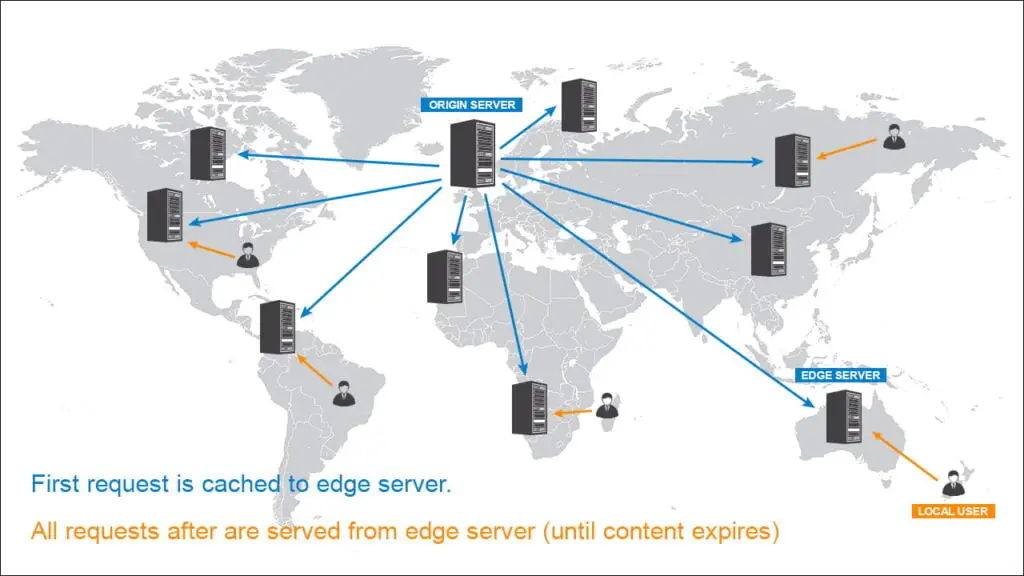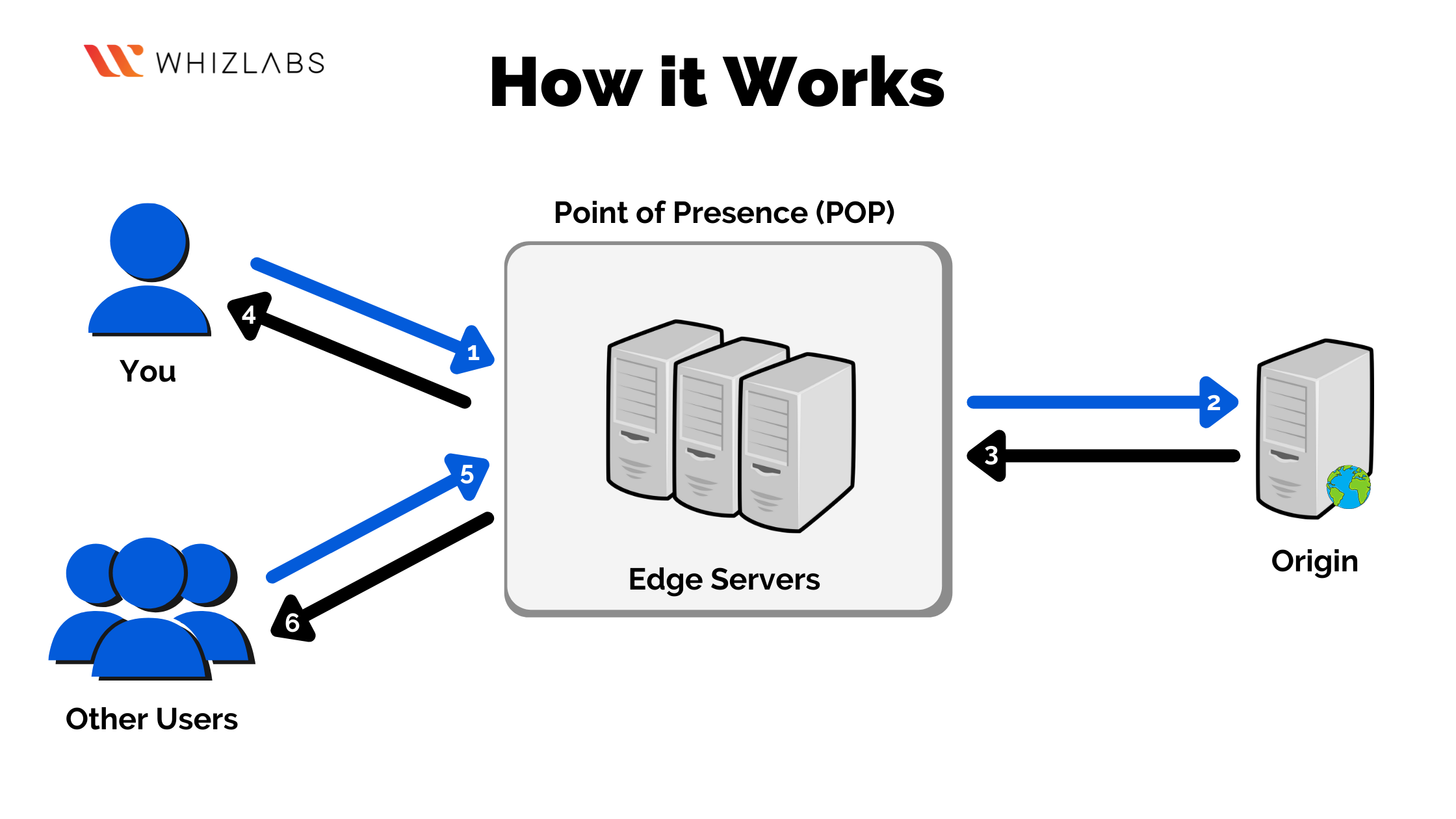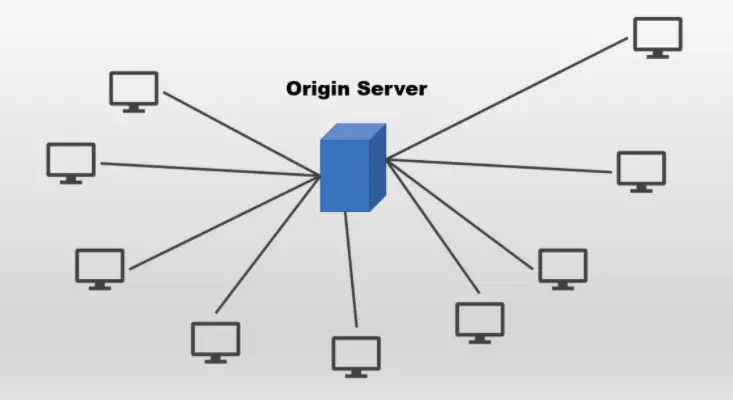Challenges of Content Delivery Across Diverse Geographies

- Latency: Distance between users and content servers can result in significant delays.
- Packet Loss: Network congestion or infrastructure issues can cause data packets to be lost.
- Variable Bandwidth: User devices have varying bandwidth capabilities, affecting content delivery speeds.
- Geolocation Restrictions: Content availability can be restricted based on geographic location.
- Cost Efficiency: Delivering content globally can be expensive without proper optimization.
Content Delivery Networks (CDNs)

CDNs are distributed networks of servers located strategically around the globe. They provide the following benefits:

1. Reduced Latency:
- Serve content from servers closest to users, minimizing distance and latency.
2. Enhanced Availability:
- Replicate content across multiple servers, ensuring redundancy and preventing downtime.
3. Optimized Bandwidth:
- Cache frequently accessed content on edge servers, reducing bandwidth consumption and improving load times.
4. Geo-Targeting:
- Deliver content tailored to specific geographic locations, including language and content localization.
5. Cost Efficiency:
- Utilize global infrastructure to reduce network costs and enhance content delivery efficiency.
Implementation and Optimization
- CDN Selection: Choose a CDN provider with a global reach and a track record of reliability.
- Server Placement: Identify and select optimal server locations based on user distribution and latency.
- Content Caching: Cache popular content on edge servers for fast delivery and reduced bandwidth usage.
- Load Balancing: Distribute traffic across multiple servers to prevent congestion and maintain availability.
- Monitoring and Analytics: Monitor CDN performance to identify bottlenecks and optimize configuration.
Benefits of CDN Integration
- Improved User Experience: Reduced latency and enhanced content availability leads to a better user experience.
- Increased Conversion Rates: Fast and reliable content delivery improves website performance and drives higher conversions.
- Global Reach: Expand the reach of content to audiences in diverse geographic locations.
- Cost Savings: Optimize bandwidth usage and reduce network expenses through CDN optimization.
- Compliance with Regulations: Meet geopolitical regulations and ensure content availability in specific regions.
By leveraging CDNs, organizations can effectively ensure high-quality content delivery across diverse geographies, providing their users with an optimal online experience.## Ensuring High-quality Content Delivery Across Diverse Geographies With Cdns
Executive Summary
Content Delivery Networks (CDNs) play a pivotal role in delivering high-quality content to users across diverse geographical locations. By leveraging a network of strategically placed servers, CDNs enable businesses to optimize content delivery, reduce latency, and enhance user experience. This comprehensive guide provides valuable insights into the benefits, key components, and best practices of utilizing CDNs to ensure seamless content delivery across global audiences.
Introduction
In today’s digital landscape, delivering high-quality content to users worldwide is paramount. The Internet has become a global village, and users expect fast, reliable access to content regardless of their location. Content Delivery Networks (CDNs) have emerged as the solution to this challenge, enabling businesses to overcome geographical barriers and provide a seamless user experience.
FAQs
Q: What is a Content Delivery Network (CDN)?
A: A CDN is a distributed network of servers located in multiple geographic regions. It acts as a middleman between a website’s origin server and end users, caching and delivering content close to the user’s location, reducing latency and improving content delivery speed.
Q: Why should I use a CDN?
A: CDNs offer a range of benefits, including reduced latency, increased website speed, improved user experience, enhanced security, and reduced bandwidth costs. By caching content on servers closer to end users, CDNs minimize the distance that data has to travel, significantly improving content delivery times.
Q: How can I choose the right CDN for my business?
A: Consider factors such as your business’s geographical reach, content type, traffic volume, and budget. Evaluate different CDN providers and their offerings, including their network infrastructure, caching capabilities, security features, and customer support.
Key Components of a CDN
1. Edge Servers:
- Located close to end users
- Cache and deliver content to reduce latency
2. Origin Server:
- Stores the original content
- Provides new content to edge servers
3. Content Caching:
- Stores frequently accessed content on edge servers
- Enables faster content delivery
4. Load Balancing:
- Distributes traffic across multiple servers
- Prevents overloading and ensures high availability
5. Routing Optimization:
- Determines the best path for content delivery
- Minimizes latency and improves delivery speed
Best Practices for CDN Usage
1. Determine Your Content Delivery Needs:
- Identify the geographical locations of your target audience
- Analyze your content type and traffic volume
2. Select a Reliable CDN Provider:
- Evaluate network infrastructure, caching capabilities, security features, and customer support
3. Optimize Content for CDN Delivery:
- Compress images and videos
- Enable gzip compression for HTML and CSS files
4. Implement Caching Strategies:
- Cache frequently accessed content on edge servers
- Set appropriate cache expiry headers
5. Monitor and Analyze Performance:
- Track CDN performance metrics
- Regularly review analytics and make adjustments as needed
Conclusion
Content Delivery Networks (CDNs) are essential for businesses looking to deliver high-quality content to users across diverse geographies. By leveraging a CDN, businesses can significantly reduce latency, enhance website speed, and improve the user experience. By following best practices and choosing the right CDN provider, businesses can ensure seamless content delivery and stay competitive in today’s digital world.
Keyword Tags
- Content Delivery Network (CDN)
- Geographical Content Delivery
- Website Speed Optimization
- Latency Reduction
- User Experience Enhancement
